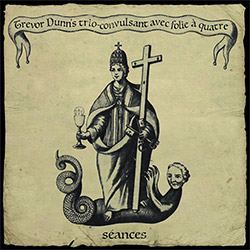
A series of powerful "séances" from the Trio-Convulsant of Trevor Dunn on bass, Mary Halvorson on guitar, and Ches Smith on drums & percussion, imagining through improv the 18th century French sect of Convulsionnaires of Saint-Médard, assisted by the Folie à Quatre of Carla Kihlstedt (volin), Oscar Noriega (clarinet), Mariel Roberts (cell) and Anna Webber (flute).
In Stock
Quantity in Basket: None
Log In to use our Wish List
Shipping Weight: 3.00 units
EU & UK Customers:
Discogs.com can handle your VAT payments
So please order through Discogs
Sample The Album:
Trevor Dunn-bass
Mary Halvorson-guitar
Ches Smith-drums, timpani, conga
Carla Kihlstedt-viola, violin
Oscar Noriega-bass clarinet, clarinet in Bb
Mariel Roberts-cello
Anna Webber-alto flute, flute in C
Click an artist name above to see in-stock items for that artist.
UPC: 020286238867
Label: Pyroclastic Records
Catalog ID: PR 21
Squidco Product Code: 32415
Format: CD
Condition: New
Released: 2022
Country: USA
Packaging: Cardboard Gatefold
Recorded at Oktaven, in Mount Vernon, New York, in January, 2022, by Ryan Streber.
"In order to bear witness one must believe what one sees and belief, of course, is subjective. Knowledge is essentially faith. And the flexibility of human memory, our blind spots (whether empathetic or optic) and our great imaginations don't make truth any easier to contain. This becomes more evident over time as the pages of history weather and the cataracts of progress cloud our collective "knowledge". Humans love to forget and to repeat. We fall subject to confirmation bias, sway to suggestion, take the easy way out and allow ourselves to be governed while adamantly broadcasting our independence. Naturally it takes followers for a leader to exist, but like anomalons or quantum particles that change when being observed, the psychologicsect of Christians in 18th century France, considered heretics by fellow servants of God, called the Convulsionnaires of Saint-Médardal battle within each of us changes depending on who is bearing witness. We are the worst portrayers of truth as we have no idea what it is. Everyone is a hypocrite. Everyone is wrong.
There was a sect of Christians in 18th century France, considered heretics by fellow servants of God, called the Convulsionnaires of Saint-Médard. After the death of a beloved deacon his tomb became the center of phenomena. What started out as mere religious hysteria with paroxysms and magical cures eventually got out of hand. Almost orgiastic by some accounts - and there are plenty of accounts, even from skeptics- the miracles and public displays of fervor were shut down by the law. The church, Saint-Médard, was closed in 1732 and the Convulsionnaires were banished mostly to private homes for their spiritual practices . These séances [Fr. sessions] included secours meurtriers, a phrase that can be translated as 'murderous reliefs', 'fatal help' or "deadly rescuers". Brutal stabbings & beatings had no effect on those requesting them in search of deliverance.
Coprophagia, spontaneous milk-vomiting, and levitation were all part of an impenetrable devotion to the unseen. Of course, in some cases fraud, fame, and the promotion from layman to priest (or priestess in most cases) could be considered motivation.
And why were the majority of the Convulsionnaires women? As Lindsay Wilson points out in Women & Medicine in the French Enlightenment (John Hopkins University Press, 1993), "...followers attacked the principles of hierarchy, privilege, and patriarchy upon which the church of the Ancien Régime was based" (p17). "Certainly the Convulsionaries deviated dramatically from traditional models of religiosity for women, which sought annihilation of the self through scrupulous obedience, constraint, and silence." (p19)
Around the same time the largest hospital/asylum in Europe, Pitié-Salpêtrière, was in full effect, evolving from gunpowder factory to prison for prostitutes to neuropsychiatric teaching center over the course of two centuries. Improvements in the early 1800s included simplifying mental disorders to four basic types: melancholia, mania, dementia and idiotism. The Invention of Hysteria (1982/2003 MIT) by Georges Didi-Huberman spells out the experimentation and spectacle that became the focus of the institute. Certainly there was much to be learned in the Age of Reason about medicine in general, but the chauvinism that reigned doesn't make it difficult to imagine a revolt, voluntary or not. "Some historians have argued that women were drawn to the Convulsionary movement because it offered them power and authority and an opportunity to be heard free of the censorship of a father, husband, or confessor" (Wilson, p32).
So how does one translate these academic, historical and esoteric concepts into music? My process is to write concurrently with the research but not conjoin the two until the music is complete.There is a narrative, but it is disjunct. For this particular topic, my trajectory followed from the role of convulsive beauty in Surrealism back towards the physical etymology, as it were, of social symptoms centuries ago. (In some other life I was a librarian.) Titles are gathered and then chosen after the fact, almost whimsically. That said, often the choices turn out to be uncanny or at least all too appropriate.
"Secours Meurtriers" which initiates this recording for musical reasons, turns out to be a bit of an overture with several distinct "séances" represented by soloists over an ostinato in 13/4. Carla's extended fury in the truncated 5/4 section perfectly renders the instructions to "play as if eating glass". In my retrospective objectivism there is a distinct story leading from one soloist/convulsionary to the next, each within their own distinct environment (tomb? street? monastic setting?). But that's just one interpretation. Throughout this record I gave Ches only a few specific suggestions, having written no actual drum parts. His creativity continues to impress me on the highest level and this song is a perfect example of that.
The title "Saint-Médard" is now self-explanatory. However, in my ear this is a country/blues tune as defined by the guitar/violin melody. It is somehow appropriate for the setting of a damp church with stone walls. The "A" section is written in 3/2 but at the bridge the guitar/flute melody expands to 5/2, the bass & cello move to an 8/8 meter in hemiola suggestive of a 17th century courante, and the violin/bass clarinet figures continue in 3/2 offset by a half-note. Total structure with distinct instability. Mary's feature here, in the one true "trio-convulsant" moment, seems hallucinatory amid an air of controversy. The church is closed, but survives on its own as the out-head signifies. In fact, Saint-Médard still stands today in Paris.
Around 2015 I wrote an entire book of music for trio-convulsant with a string quartet. We rehearsed and played a good 60 minutes of music in NYC before I decided I wasn't happy with the material. I have to say, there is no feeling like discarding labor-intensive work. A few ideas from that book did survive and make it into the piece "Restore All Things" -another eerie coincidence. The title reflects millenarianism and the "messianic conviction of the need to purify". (B. Robert Kreiser Miracles, Convulsions and Ecclesiastical Politics in Early Eighteenth-Century Paris. Princeton University Press, 1978 p313). A nine bar melodic phrase in the strings is superimposed over an eleven bar bass line while the guitar acts as a free agent. Anna's solo in this tune is probably my favorite moment on the record. You can't get more apocalyptic than a single-note drone, glissandi strings and micro-tonal flute.
The year 1733, while signifying a tumultuous period for the Convulsionnaires, contains implausible numerology which is also tied in with Louis XV's first name represented in Roman numerals (LUDOVICUS) and equalling the Number of The Beast (see Kreiser, pp 303-304) - a detail I couldn't resist as an '80s metalhead. As a last minute decision in the studio this piece contains the one collective improvisation of the entire septet somehow implying the span of a year teeming with melee.
Starting with a bassline constructed entirely of parallel fifths, hinting at medieval organum, I found a way to write some melancholic melodies in "The Asylum's Guilt". The drama and sadness of this piece suggest the impotence of mental health care, how far we are from understanding ourselves or being able to help others. Mariel's improvisational choices on this one couldn't have been more arresting, and Oscar does a great job of navigating a sweet solo through a web of fragile harmony.
"Eschatology" continues the lineage of bebop tunes named with the suffix indicating knowledge, from Parker's "Ornithology" to Hasselbring's "Scatology", although this is certainly not bebop and only vaguely resembles jazz. The introductory chamber duet is the retrograde material of the ensuing melody. I later harmonized that intro which forms the guitar solo. Consider this temporal juggling a compositional attempt at hysteron proteron.
It felt necessary to finish off a dense collection of music with something assuaging. "Thaumaturge" comes from a bass line in 9/4 conjured years ago. Fighting the urge to overwrite I decided to let this one sit as a simple 9 bar melody with a tag and no development. A collective metric accident occurred in this recording which I chose not to fix as it seemed like a perfect stroke of magick, perhaps a metaphor for human error."-Trevor Dunn, Brooklyn 2022
Artist Biographies
• Show Bio for Trevor Dunn "About Trevor Dunn 1968: born traversing a fine line between hippies and rednecks behind the redwood curtain. first musical affinities: the beach boys, blondie, cheap trick, kiss. first television: ultraman, speedracer, bugs bunny. first films: over the edge, the mouse and his child, snoopy come home, bedknobs & broomsticks. first books: zylpha keatly snyder's witches of worm, the velvet room and the headless cupid. 1977: began studies on clarinet 1981: began studies on electric bass and subsequently quit the clarinet as i realized that girls would now talk to me. 1986: the same year that Lynch's blue velvet and Slayer's reign in blood were released, graduated from EHS. the school's motto: "pigs live in litter, loggers live in pride". started a band called Mr. Bungle. then i got a job at shakey's pizza. began classical technique studies on the contrabass. 1990: graduated from humboldt state university after studying the likes of harry partch, iannis xenakis, alban berg, igor stravinksy, gustav mahler, js bach, you know, all the cats. Also performed Koussevitsky's Concerto for Double Bass with the HSO. 1992: first Mr. Bungle record released on Warner Bros. Moved to SF and two months later embarked on the first MB tour of the US. At the age of 24 I was one of the oldest people in the van. For the next eight years played lots of weddings and restaurants between tours with MB. Learned a lot about music playing with Connah, Goldberg, Schott, Kavee, Amendola, Greenlief, et al. 2000: relocated to Brooklyn, NYC. Currently playing in various projects under the direction of John Zorn (Nova Quartet, Dreamers, Electric Masada, Aleph Trio). The Nels Cline Singers, Curtis Hasselbring's New Mellow Edwards, Melvins Lite, Endangered Blood, Tomahawk, The Darius Jones Quartet & Erik Friedlander's Bonebridge. I still have plans for my own bands: trio-convulsant, PROOF Readers and MadLove; and I continue to write music for independent films, practice long tones, pine over Daisy Lowe and drink shitty beer in heavy metal saloons." ^ Hide Bio for Trevor Dunn • Show Bio for Mary Halvorson "One of improvised music's most in-demand guitarists, Mary Halvorson has been active in New York since 2002, following jazz studies at Wesleyan University and the New School. Critics have called her "a singular talent" (Lloyd Sachs, JazzTimes), "NYC's least-predictable improviser" (Howard Mandel, City Arts), "one of the most exciting and original guitarists in jazz-or otherwise" (Steve Dollar, Wall Street Journal), and "one of today's most formidable bandleaders" (Francis Davis, Village Voice). The Philadelphia City Paper's Shaun Brady adds, "Halvorson has been steadily reshaping the sound of jazz guitar in recent years with her elastic, sometimes-fluid, sometimes-shredding, wholly unique style." After three years of study with visionary composer and saxophonist Anthony Braxton, Ms. Halvorson became an active member of several of his bands, including his trio, septet and 12+1tet. To date, she appears on six of Mr. Braxton's recordings. Ms. Halvorson has also performed alongside iconic guitarist Marc Ribot, in his bands Sun Ship and The Young Philadelphians, and with the bassist Trevor Dunn in his Trio-Convulsant. Over the past decade she has worked with such diverse bandleaders as Tim Berne, Taylor Ho Bynum, Tomas Fujiwara, Ingrid Laubrock, Myra Melford, Jason Moran, Joe Morris, Tom Rainey and Mike Reed. As a bandleader and composer, one of Ms. Halvorson's primary outlets is her longstanding trio, featuring bassist John Hébert and drummer Ches Smith. Since their 2008 debut album, Dragon's Head, the band has been recognized as a rising star jazz band by Downbeat Magazine for five consecutive years. Ms. Halvorson's quintet, which adds trumpeter Jonathan Finlayson and alto saxophonist Jon Irabagon to the trio, has released two critically acclaimed albums on the Firehouse 12 label: Saturn Sings and Bending Bridges. Most recently she has added two additional band members-tenor saxophonist Ingrid Laubrock and trombonist Jacob Garchik-to form a septet, featured on her 2013 release Illusionary Sea. Ms. Halvorson also co-leads a longstanding chamber-jazz duo with violist Jessica Pavone, the avant-rock band People and the collective ensembles Thumbscrew and Secret Keeper." ^ Hide Bio for Mary Halvorson • Show Bio for Ches Smith "Born in San Diego, CA and raised in Sacramento, Ches Smith came up in a scene of punks and metal musicians who were listening to and experimenting with jazz and free improvisation. He studied philosophy at the University of Oregon before relocating to the San Francisco Bay area in 1995. After a few years of playing with obscure bands and intensive study with drummer / educator Peter Magadini, he enrolled in the graduate program at Mills College in Oakland at the suggestion of percussionist William Winant. There he studied percussion, improvisation, and composition with Winant, Fred Frith, Pauline Oliveros and Alvin Curran. One of Winant's first "assignments" for Ches was to sub in his touring gig at the time, Mr. Bungle (here he met bassist / composer Trevor Dunn who would later hire him for the second incarnation of his Trio-Convulsant). During his time at Mills, Ches co-founded two bands: Theory of Ruin (with Fudgetunnel / Nailbomb frontman Alex Newport), and Good for Cows (w/ Nels Cline Singers' Devin Hoff). He currently performs and records with Xiu Xiu, and Secret Chiefs 3. He has also performed with Ben Goldberg, Annie Gosfield, Wadada Leo Smith, John Tchicai, Fred Frith, and Trevor Dunn. In addition to Ceramic Dog, he also leads his two of his own projects, Congs for Brums and These Arches. He currently spends his time between Los Angeles, San Francisco and Brooklyn." ^ Hide Bio for Ches Smith • Show Bio for Carla Kihlstedt "Carla Kihlstedt (born 1971) is an American composer, violinist, vocalist, and multi-instrumentalist, originally from Lancaster, Pennsylvania and currently working from a home studio on Cape Cod. She is a founding member of Tin Hat Trio (1997, renamed Tin Hat), Sleepytime Gorilla Museum, The Book of Knots, Causing a Tiger and Rabbit Rabbit. Other musical projects include 2 Foot Yard, Charming Hostess and Minamo (Carla Kihlstedt & Satoko Fujii). She is a recognized classical composer who has performed with the International Contemporary Ensemble (ICE), has worked occasionally on projects with Tom Waits and Fred Frith, and recorded numerous albums as a guest or session musician. Kihlstedt has studied at the Peabody Conservatory of Music, San Francisco Conservatory of Music, and Oberlin Conservatory of Music. In February 2012 she founded Rabbit Rabbit with her husband (and former Sleepytime Gorilla Museum drummer) Matthias Bossi. Rabbit Rabbit released their debut album, Rabbit Rabbit Radio - Vol. 1 in 2013. The band revolves around a song-a-month subscription website called Rabbit Rabbit Radio." ^ Hide Bio for Carla Kihlstedt • Show Bio for Oscar Noriega "Multi-instrumentalist and composer, Oscar lives in Brooklyn since 1992. He has worked with Lee Konitz, Anthony Braxton, Gerry Hemingway, Dewey Redman and Paul Motion. He is currently performing with Tim Berne's Snakeoil, Endangered Blood (Chris Speed, Jim Black, Trevor Dunn) and colead with Jacob Garchik, the Mexico-inspired Banda De Los Muertos. He plays alto saxophone, clarinet, bass clarinet and drums." ^ Hide Bio for Oscar Noriega • Show Bio for Mariel Roberts ""Trailblazing" cellist Mariel Roberts (Feast of Music) is quickly gaining recognition as a deeply dedicated interpreter and performer of contemporary music. Recent performances have garnered praise for her "technical flair and exquisite sensitivity" (American Composers Forum), as well as her ability to "couple youthful vision with startling maturity". (InDigest Magazine). She holds degrees from both the Eastman School and the Manhattan School of Music, where she specialized in contemporary performance practice while studying with Alan Harris and Fred Sherry. Mariel is a performer of international reach who has played throughout the US and Europe appearing both as a soloist and with ensembles such as Signal, Wet Ink Ensemble, Dal Niente, SEM Ensemble, the NouveauClassical Project, and the Wordless Music Orchestra. Mariel's premeire solo album, nonextraneous sounds, was released on Innova Records in September 2012. The record, consisting of brand new works commisioned by Mariel, received high accolades from sources such as TimeOut NY, TimeOut Chicago, The American Composers Forum, New Sounds with John Schaefer, and WQXR radio." ^ Hide Bio for Mariel Roberts • Show Bio for Anna Webber "Reedist Anna Webber, a Brooklynite by way of British Columbia, is one of the most exciting new arrivals on the New York avant-garde jazz scene in the past couple years. Her second album, SIMPLE, demonstrates the inextricable link between her improvising and her compositions; her detail-rich writing recalls the work of elders as disparate as Tim Berne and Henry Threadgill, and her busy motion evokes a fizzy sort of exhilaration.-Peter Margasak, Chicago Reader Anna Webber is an integral part of a new wave of the Brooklyn avant-garde jazz scene. A saxophonist and flutist who strives for the unexpected, she has furthermore consistently proven herself to be a unique and forward-thinking composer with releases such as 2014's SIMPLE (Skirl Records) and 2013's Percussive Mechanics. Binary, the follow-up to SIMPLE which features bandmates John Hollenbeck and Matt Mitchell, further establishes Webber as a compelling improvisor and composer." ^ Hide Bio for Anna Webber
3/26/2025
Have a better biography or biography source? Please Contact Us so that we can update this biography.
3/26/2025
Have a better biography or biography source? Please Contact Us so that we can update this biography.
3/26/2025
Have a better biography or biography source? Please Contact Us so that we can update this biography.
3/26/2025
Have a better biography or biography source? Please Contact Us so that we can update this biography.
3/26/2025
Have a better biography or biography source? Please Contact Us so that we can update this biography.
3/26/2025
Have a better biography or biography source? Please Contact Us so that we can update this biography.
3/26/2025
Have a better biography or biography source? Please Contact Us so that we can update this biography.
Track Listing:
1. Secours Meurtriers 7:25
2. Saint-Medard 5:55
3. Restore All Things 6:53
4. 1733 9:08
5. The Asylum's Guilt 7:02
6. Eschatology 6:07
7. Thaumaturge 4:57
Improvised Music
Jazz
Free Improvisation
Chamber Jazz
Septet recordings
Trio Recordings
Quartet Recordings
NY Downtown & Metropolitan Jazz/Improv
Staff Picks & Recommended Items
New in Improvised Music
Search for other titles on the label:
Pyroclastic Records.


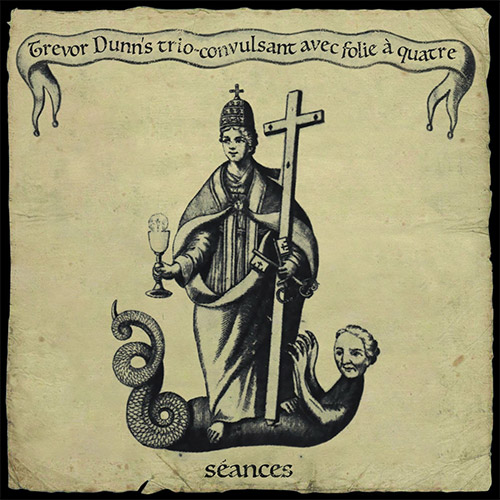




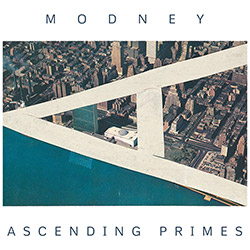









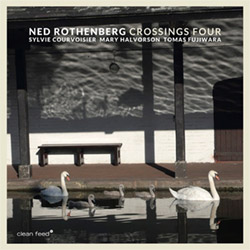





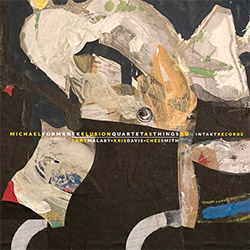


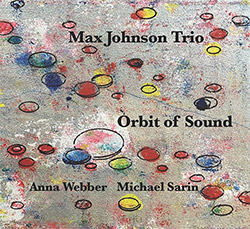

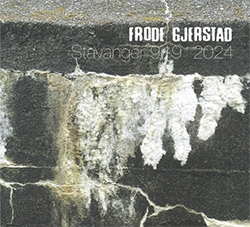
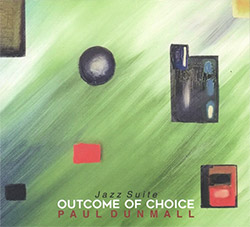
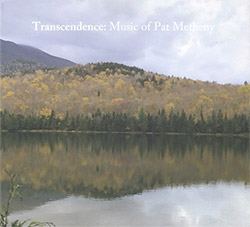
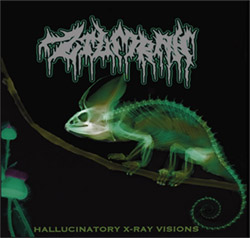
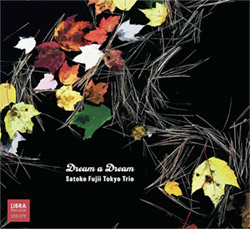
![Ackerley / Prymek / Turner: All Hope With Sleeping Minds [CASSETTE]](https://www.teuthida.com/productImages/misc4/35950.jpg)
![Myers, David Lee : Tin Drop Tear [BOOK w/ DOWNLOAD]](https://www.teuthida.com/productImages/misc4/36030.jpg)


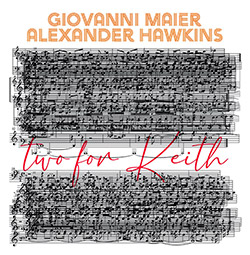
![Schindler, Udo / Sandy Ewen / Damon Smith: Munich Sound Studies Vols. 4, 5 & 6 [3 CDs]](https://www.teuthida.com/productImages/misc4/35966.jpg)
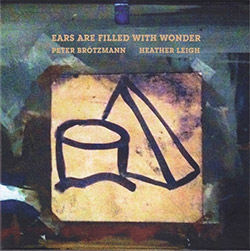





![Turbulence Orchestra & Sub-Units: Smear Out the Difficulties (Double Live) [2 CDs]](https://www.teuthida.com/productImages/misc4/36048.jpg)
![Perelman, Ivo / Tyshawn Sorey: Paralell Aesthetics [2 CDs]](https://www.teuthida.com/productImages/misc4/35871.jpg)
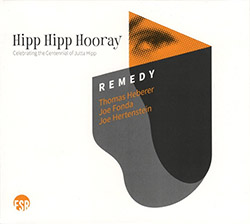

![Sjostrom, Harri: SoundScapes #4 Festival Berlin 2023 [3 CDs]](https://www.teuthida.com/productImages/misc4/35874.jpg)
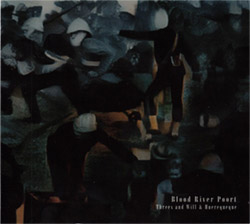
![Musicworks Magazine: #150 Winter 2024/25 [MAGAZINE + CD]](https://www.teuthida.com/productImages/misc4/36035.jpg)
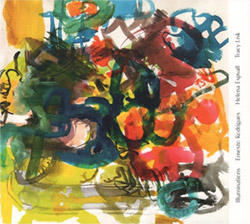

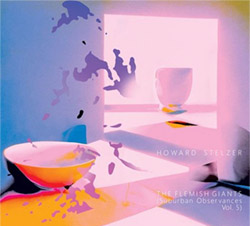


![Glenn, Jordan: Flustered [CASSETTE]](https://www.teuthida.com/productImages/misc4/35948.jpg)


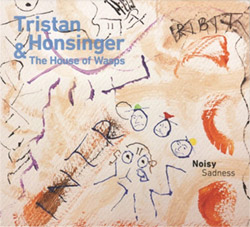
![Lindorff-Ellery, Evan: Church Recordings from Monhegan [CASSETTE]](https://www.teuthida.com/productImages/misc4/35949.jpg)
![Schindler, Udo / Werner Dafeldecker / Gunnar Geisse: Travelling Sound Images - Cognitive Transfers [Trio]](https://www.teuthida.com/productImages/misc4/35767.jpg)
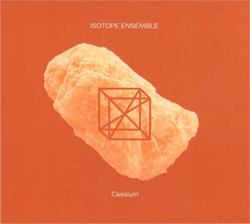
![Egberth, Dennis: The Dennis Egberth Dynasty [VINYL]](https://www.teuthida.com/productImages/misc4/35549.jpg)


![Schindler, Udo / Rieko Okuda / Eric Zwang Eriksson: Disturbed Terrains [2 CDs]](https://www.teuthida.com/productImages/misc4/35330.jpg)
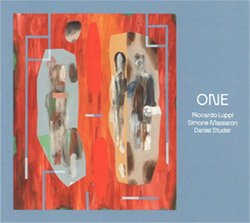
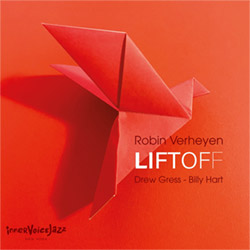
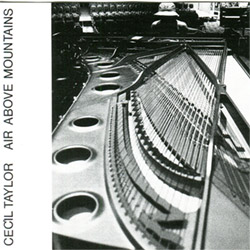


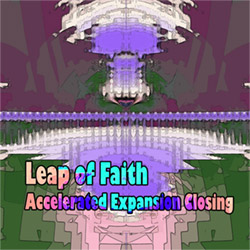
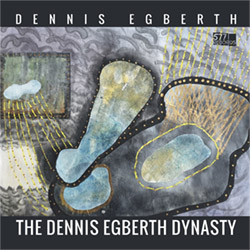
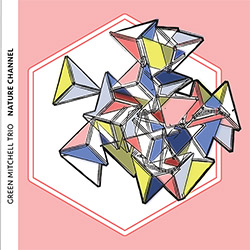

![Wolf Eyes / Anthony Braxton: Live At Pioneer Works, 26 October 2023 [VINYL]](https://www.teuthida.com/productImages/misc4/35839.jpg)

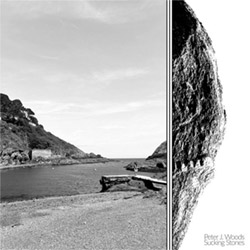
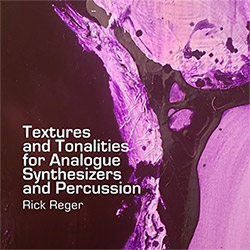

![Olencki, Weston : Pearls Ground Down To Powder [VINYL]](https://www.teuthida.com/productImages/misc4/35956.jpg)
![Myers, David Lee: Oculus [2CDs]](https://www.teuthida.com/productImages/misc4/35857.jpg)


![dustsceawung: dustsceawung [CASSETTE w/ Download]](https://www.teuthida.com/productImages/misc4/35753.jpg)
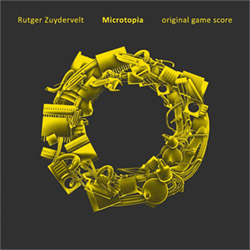



![Halls of the Machine: Atmospheres For Lovers And Sleepers [CASSETTE w/ DOWNLOAD]](https://www.teuthida.com/productImages/misc4/35806.jpg)
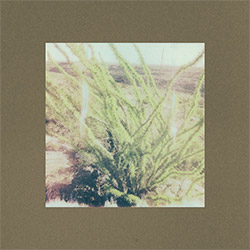
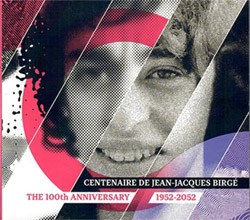
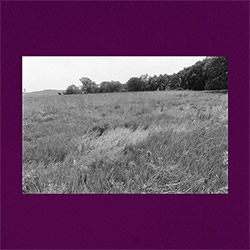
![AHC (Alexander Cooper): Lase [2 CDs]](https://www.teuthida.com/productImages/misc4/35754.jpg)



![Fagaschinski, Kai / Yan Jun : Graveyard Processions [VINYL w/ DOWNLOAD]](https://www.teuthida.com/productImages/misc4/35474.jpg)
![Brant, Cody / Carl Kruger: Smoke Detail [CASSETTE w/ DOWNLOAD]](https://www.teuthida.com/productImages/misc4/35551.jpg)







![Zorn, John / JACK Quartet: The Complete String Quartets [2 CDs]](https://www.teuthida.com/productImages/misc4/35609.jpg)

![Lonsdale, Eden: Dawnings [2 CDs]](https://www.teuthida.com/productImages/misc4/35480.jpg)







![Sanna, Claudio: Compositori Sardi Contemporanei II [2 CDs]](https://www.teuthida.com/productImages/misc4/35317.jpg)







![Zurria, Manuel: Fame di Vento [3 CDs]](https://www.teuthida.com/productImages/misc4/35167.jpg)

![Granberg, Magnus / Nattens Inbrott / Skogen: Holde Traume, Kehret Wieder! [2 CDs]](https://www.teuthida.com/productImages/misc4/35038.jpg)

![Electric Bird Noise / Derek Roddy: 8-10-22 [CD EP]](https://www.teuthida.com/productImages/misc4/35970.jpg)








![Elephant9 : Mythical River [VINYL]](https://www.teuthida.com/productImages/misc4/34624.jpg)


![Elephant9 with Terje Rypdal: Catching Fire [VINYL 2 LPs]](https://www.teuthida.com/productImages/misc4/35355.jpg)
![Deerlady (Obomsawin, Mali / Magdalena Abrego): Greatest Hits [VINYL]](https://www.teuthida.com/productImages/misc4/34876.jpg)







![Staiano, Moe: Away Towards the Light [VINYL + DOWNLOAD]](https://www.teuthida.com/productImages/misc4/35037.jpg)



![Caveira (Gomes / Sousa / Abras / Ferrandini): Ficar Vivo [VINYL]](https://www.teuthida.com/productImages/misc4/34643.jpg)
![Coley, Byron: Dating Tips for Touring Bands [VINYL]](https://www.teuthida.com/productImages/misc4/17906.jpg)

![Lost Kisses: My Life is Sad & Funny [DVD]](https://www.teuthida.com/productImages/misc4/lostKissesDVD.jpg)